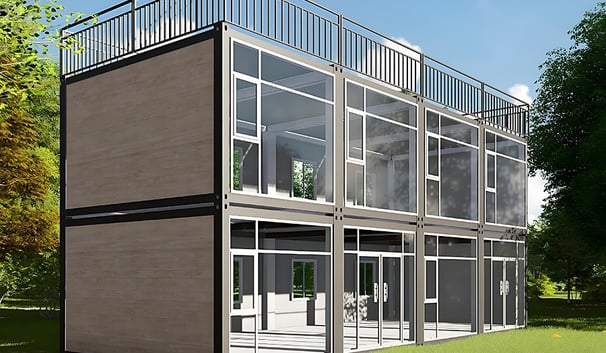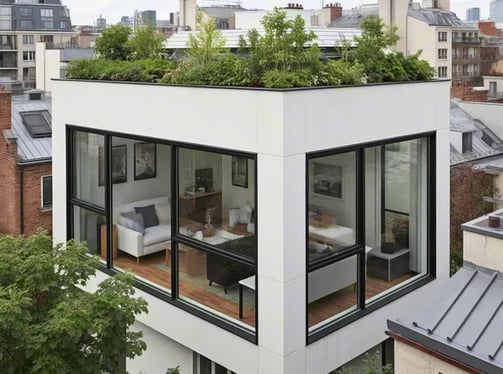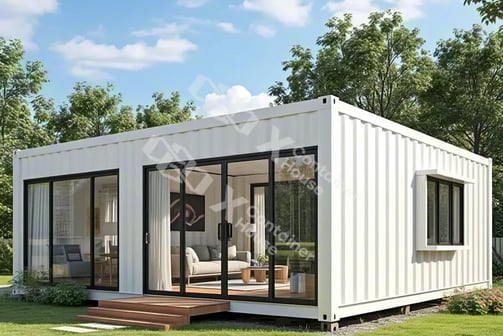Flat Pack Houses: The Future of Container Living?
Discover the latest trend in sustainable living with a deep dive into the world of Flat Pack Houses. This article explores whether these innovative, easily assemblable dwellings could be the next big chapter in the evolution of container living. From their eco-friendly benefits to their cost-effectiveness and design flexibility, we unpack the potential of Flat Pack Houses to revolutionize the way we think about affordable, efficient, and stylish housing solutions. Join us as we delve into the ins and outs of this exciting new concept and ponder if Flat Pack Houses are indeed the future of modern, sustainable living.
FLAT PACK HOUSE
3/19/20253 min read


In the vast expanse of architectural innovation, few ideas have captured the imagination quite like the transformation of shipping containers into habitable spaces. From their humble beginnings as steel boxes traversing the world's oceans to their current incarnation as chic, sustainable dwellings, the journey of container homes, including their flat pack (or Apple Capsule House, as some might creatively dub them) variants, is nothing short of remarkable. But how did we get here? And what does the future hold for these versatile structures?
From Cargo to Comfort: The Birth of Container Homes
The story of container homes begins with the shipping container itself, a seemingly mundane invention that revolutionized global trade in the mid-20th century. These durable, stackable boxes were designed for efficiency, capable of withstanding the harsh conditions of the high seas. Little did anyone imagine that they would one day become the foundation for a new wave of affordable, eco-friendly housing.
The transition from cargo carrier to living space started in the 1980s, with pioneers experimenting with converting retired containers into habitable units. The appeal was clear: they were cheap, abundant, and structurally sound. Over time, this niche concept gained traction, evolving into a global trend that embraced creativity and sustainability.
Around the World in Container Homes
Different countries and regions have put their unique spin on container architecture, reflecting local cultures, climates, and regulatory environments. In urban centers like Amsterdam and London, where space is at a premium, container homes have become a symbol of innovative, space-saving living. Here, designers often stack containers to create multi-level dwellings, complete with rooftop terraces and green walls.
In warmer climates, such as Australia and parts of South America, container homes embrace open-air designs, with large windows and sliding doors that maximize natural ventilation and light. Some even incorporate outdoor living spaces, blurring the lines between indoor and outdoor living.
Meanwhile, in developing countries, container homes are seen as a practical solution to rapid urbanization and housing shortages. Organizations and individuals alike are leveraging the modularity and cost-effectiveness of containers to build schools, clinics, and affordable housing communities.
The Rise of Flat Pack Houses
Enter the flat pack house, a subset of container homes that takes prefabrication to the next level. These homes, often referred to as Apple Capsule Houses or Creative Container Houses, are designed to be easily transported, assembled, and customized. They combine the durability and versatility of traditional container homes with the convenience and efficiency of modern building techniques.
Flat pack houses typically come with detailed assembly instructions, making them accessible to DIY enthusiasts and professional builders alike. They can be expanded or modified over time, adapting to the changing needs of their occupants. And because they're made from recycled or repurposed containers, they offer a sustainable alternative to traditional construction methods.
Two Examples Worth Picturing
Urban Oasis: Imagine a sleek, modern flat pack house perched on a rooftop in the heart of a bustling city. Its minimalist design, with large glass panels and a rooftop garden, offers a serene escape from the urban hustle and bustle.


2.Off-Grid Retreat: Picture a cozy, off-grid flat pack house nestled in a remote forest. Its rustic exterior blends seamlessly with the natural surroundings, while its interior is equipped with all the modern amenities one could need.


The Future of Container Living
As the world faces increasing pressure to build sustainably and affordably, flat pack (or Creative Container) houses offer a compelling solution. They embody the principles of circular economy, reducing waste and promoting resource efficiency. And with advances in technology and design, the possibilities for these versatile structures are endless.
Whether you're looking for a unique holiday home, a sustainable urban dwelling, or an affordable housing solution, flat pack houses are worth watching. They represent the next chapter in the evolution of container living, a journey that began with a simple steel box and has grown into a global movement.
So, are flat pack houses the next chapter in the evolution of container living? The answer lies in their ability to adapt, innovate, and inspire. As we continue to explore the possibilities of these versatile structures, one thing is certain: the future of container living is bright, sustainable, and full of potential.
About
Contact
Support
E_mail:
info@xcontainerhouse.com
Tel:+86 536 628 1777
Fax:+86 536 628 1777
OUR POLICY
© 2025. All rights reserved.






